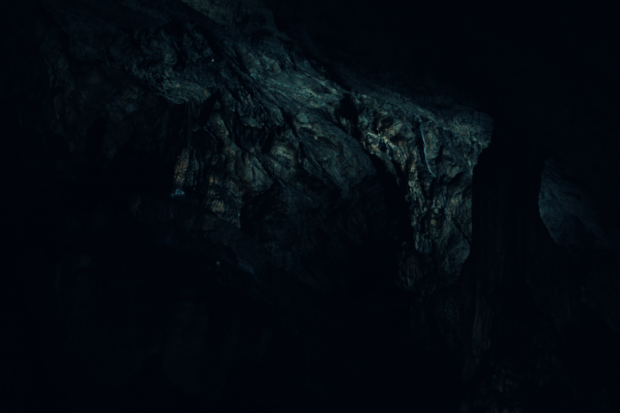
Cave. INQUIRER.net stock images
MANILA, Philippines — The Department of Environment and Natural Resources (DENR) has reclassified four caves in the provinces of Abra, Quezon, and Albay under varying degrees of protection for management and conservation.
The DENR said in a statement Tuesday that it reclassified the following caves through its Biodiversity Management Bureau (BMB) Regional and Provincial Offices:
- Ganway Cave in Brgy. Malamsit, Penarrubia town, Albay from Class I to Class II
- Quitinday Cave in Brgy. Quitinday, Jovellar town, Albay from Class I to Class II
- Sung Wan Cave in Brgy. Lawigue, Tayabas City, Quezon province from Class I to Class II
- Palale Cave in Brgy. Ibaba Palale in Tayabas City from Class II to I
Class I caves are those with “delicate and fragile geological formations, threatened species, and archeological and paleontological values.”
Under this class, only activities for mapping, photography, educational, and scientific purposes are allowed.
On the other hand, Class II caves are those with “areas or portions with hazardous conditions and sensitive geological, archeological, cultural, historical, and biological values or high-quality ecosystems.”
Caves under Class II can be used for educational tours but must be guided by experienced cavers.
According to DENR Officer-in-Charge Ernesto Adobo Jr., the classification of caves is contained in DENR Administrative Order No. 2003-29 or the Implementing Rules and Regulations of Republic Act No. 9072.
With the administrative order, the DENR is entrusted with the planning, developing, and implementation of a national program for the management, protection, and conservation of caves and cave resources in the country.
Adobo also said that being in a pandemic, the agency plays an important role in setting standards for the protection and sustainability of the country’s natural resources, which the tourism industry relies upon.
“Finding the middle ground where the critical importance of caves to the country’s biodiversity and the critical role they have to the nation’s socio-cultural heritage meet demonstrates the distinct mandate of the DENR to secure the sustainability of the country’s rich natural resources and their benefits to our people,” Adobo said in the same statement.
“These initiatives set a road to more resilient and regenerative nature-based tourism practices that illustrate their natural resilience and, as a result, enable the public to enjoy these natural assets in perpetuity,” he added.
For his part, DENR-BMB OIC-Director Natividad Bernardino said that before the caves undergo reclassification, concerned DENR offices asses caves for safety and supply of oxygen, high endemism and presence of threats and hazards, safety of its areas as potential ecotourism sites, and absence of hazardous conditions – to evaluate changes.
Bernardino further reminded the public to comply with safe caving protocols such as wearing proper caving attires and following proper cave decorum.
“Visit tourism centers and ask for Department of Tourism-accredited cave guides who will help in navigating caves safely,” Bernardino said in the same statement. — Nicole Faye Agcaoili, INQUIRER.net intern
RELATED STORY
DENR puts 158 more caves under protection